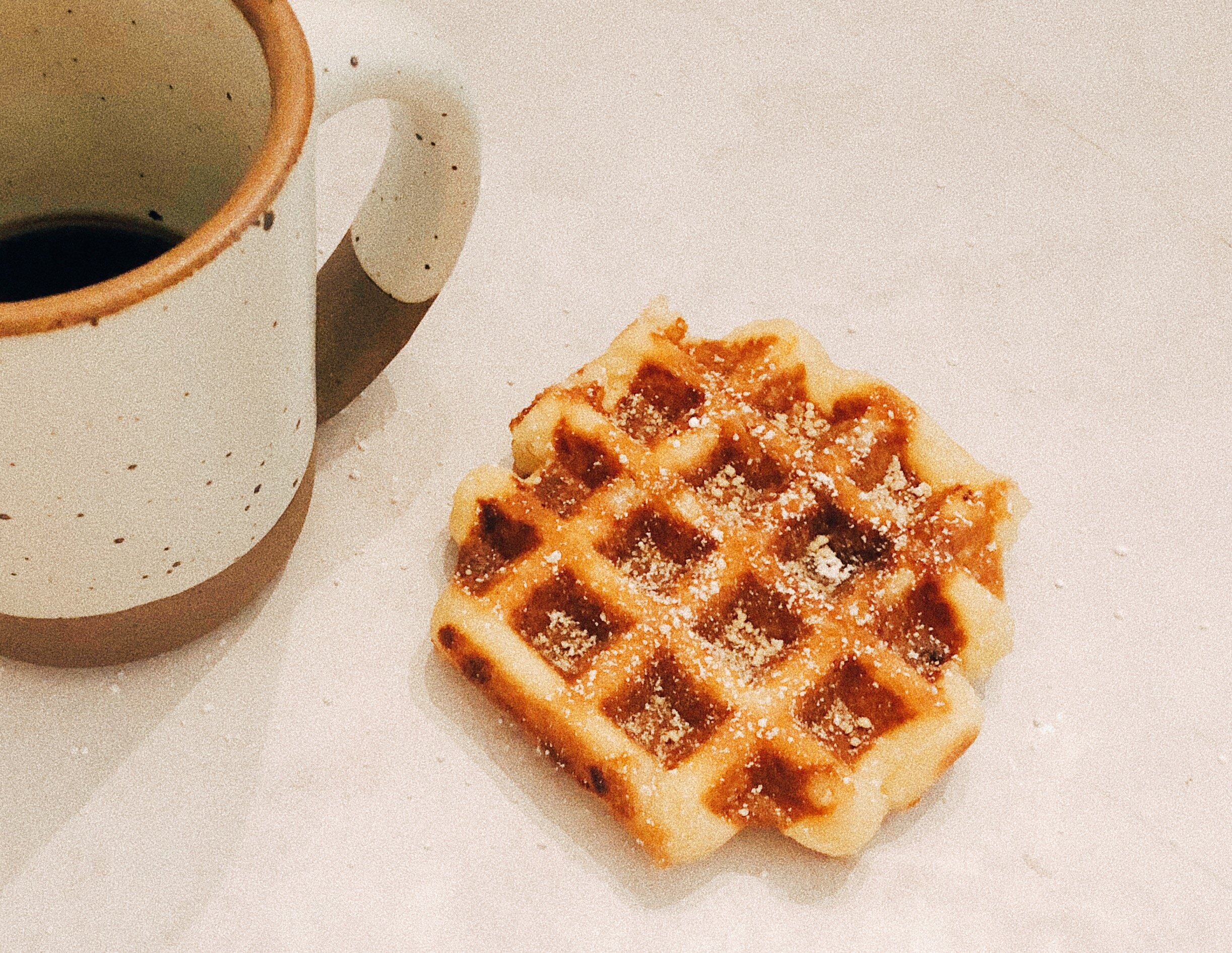Gaufre de Liège
It all started when I was about five years old and living with my family in Brussels, Belgium. I have vivid memories of walking through the Grand Place, down cobblestone side streets and stumbling upon these sweet waffle stands. The aroma of warm brioche like dough infused with caramelized pearls of sugar is intoxicating. Waiting in line to order a gaufre de Liège, I’m overwhelmed by the sight of waffles lined up in paper food trays and topped with whipped cream, strawberries, bananas, chocolate and powdered sugar. As a five year old with a love for sweets, it didn’t get any better than this. As a thirty-five year old with a love for sweets, it still doesn’t get any better than this.
Over the years, the Liège waffle randomly pops back into my life and rekindles our love affair: a trip back to Brussels, Hendrickx Bakery in Chicago, Sweet Belgium in Charleston, or when Stewart brings home the Euro Classic Imports version from Whole Foods (Not quite the same, but I never turn them down!). He hides them in our kitchen cabinet, behind the coffee mugs, so I don’t have to share with the kids.
I thought about making these waffles last weekend when I received an unexpected email from my Dad. The subject line was “Delicious Liège waffle recipe for waffles from Blue Bottle Coffee” with a link to the recipe inside. Coincidence? Perhaps. But I read it as a sign to fire up the waffle iron!
Deciding on which recipe to follow took some time. From Smitten Kitchen and Blue Bottle Coffee to Food and Wine magazine and food bloggers in between, there’s a substantial number of recipes to choose from. But one from a Wordpress blog struck me as the real deal. Artisanal Waffles literally dedicated their blog to creating the most authentic version of a gaufre to Liège - its origin dating back to the 1800s. For example, Artisinal Waffles says:
“…the bread flour, milk, and obscene amount of yeast you usually see for Liège recipes would have never been used. Never. Literally, if you see a recipe that calls for bread flour, milk or more than a ½ teaspoon of yeast per cup of flour, it still might produce a waffle, but it won’t be a Liège waffle.”
Color this waffle nerd convinced. I found the recipe I wanted to use. With active yeast and Belgian pearl sugar in hand, I was ready to start mixing!
It was a two-day process. Most of the time is letting the dough rise and an overnight stay in the refrigerator. I started at 1:30pm on the first day and was eating my little piece of heaven by 9:30am the next morning. For making these Liège waffles at home, I’m not sure you could come closer to the ones from the streets of Brussels (or made by a professional baker).
I realize most will read this (if anyone is reading this) and then go put an Eggo in the toaster. However, if you are tempted to try this recipe, here are a few pointers from my experience:
Using a Belgian waffle maker is ideal. You want those deep square pockets.
I used my Cuisinart Belgian waffle maker and put the heat setting on a 4 out of 6.
I set my timer for three minutes. The blog said it could take 4 minutes or more to cook the waffles. The first batch took 4 minutes. Subsequent batches took a little less time, so I’d peek in on the waffles after about 3 minutes. You want to make sure the dough is cooked through on the inside and you’ve given the sugar enough time to caramelize, giving you that beautifully deep golden brown color.
Be careful! Hot sugar will burn the hell out of your hands.
Here’s the pearl sugar I used.
I got my active yeast from a local bakery, but you can find it here as well.
Living abroad as a kid is what initially cultivated my love for delectable desserts and an appreciation for good food. Making these gaufres de Liège brings me back to where it all began.

